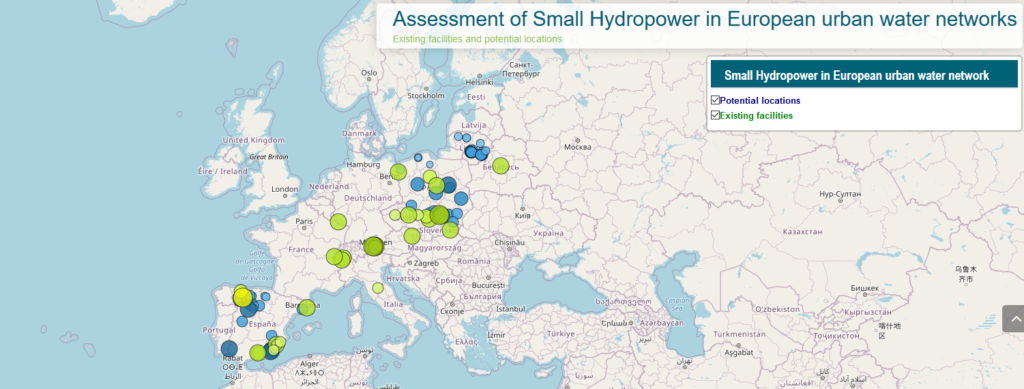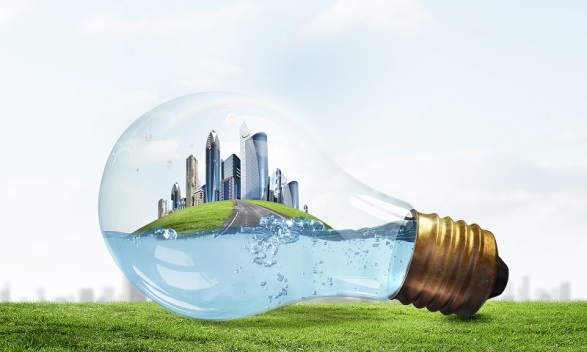Water is a source of life… and energy. In this post, we are addressing the water-energy nexus in the urban context, where both resources are essential and at the same time critical with an unexorable increase in the demand due to demographic movements and economic growth. Traditional hidrological planning policies have been based on the capacity to regulate and increase water availability. This approach has led to the gradual depletion of the resource with over-exploited aquifers, loss of quality of the water supplied, deterioration of aquatic ecosysems or the appearance of conflicts between users. In parallel, we face the effects derived from climate change, which is undoubtedly a water crisis and a threat multiplier: floods, storms and droughts are becoming more frequent and extreme, and these trends are projected to increase as the climate continues to change. Furthermore, much of the water infrastructure in the developed world is now over 50 years old and needs to be replaced, improved or repaired. Extreme temperatures and aging infrastructure will aggravate the problem of water leaks and confirm the need to control and reduce leaks in drinking water networks.
In general, all these pressures on the urban water cycle imply an increase in energy consumption and operating costs. However, to date, energy is rarely mentioned in urban water planning strategies. In this way, cities face the continuous challenge of providing urban water services without increasing the impact on the environment. This, together with the perennial debate over whether water should be a “luxury good” or a “social good accessible to all”, could place water in the focus of the biggest geopolitical conflict of the 21st century.
This current context of water scarcity and climate emergency demands solutions to increase the cities resilience. In addition, Europe aims to be the first climate-neutral continent by 2050 and municipalities will clearly play a fundamental role in this transition. The water sector can become a leader in providing the kind of green infrastructure, services and jobs needed to enable climate change mitigation and adaptation.
In CARTIF we are working on the European LIFE NEXUS project that proposes a paradigm shift by considering the urban water cycle as a source of renewable energy. Throughout the cycle there are locations with excess energy where it is necessary to adapt the flow or pressure to the supply conditions. Within the framework of the project, we are analyzing the potential of mini-hydropower systems to recover the unexploited energy at these sites where energy is being dissipated.

Our project addresses two complementary objectives. On the one hand, we have carried out the first European inventory of the mini-hydropower potential in European cities, which is already available through the project website and currently houses data from 101 locations. On the other hand, we seek to identify what type of technology is ideal for urban sites where the electricity generation capacity is usually less than 100 kW. Among the different systems available, the Pump as Turbine (PaT) technology has been selected and the novel integration of a PaT with a battery storage is being carried out to optimize the energy generation and use. The new prototype will be fully operational by the end of 2021 at the Drinking Water Treatment Plant (DWTP) of León in Spain. One of the objectives of the project will be to validate this innovative technology, obtain information on its real performance and analyze its viability. Specificallly, it is expected to have a generation of 252 MWh per year of renewable electricity and a 100% in GHG emisisons from th DWTP, which means avoiding the emission of 163 tons of CO2 equiv per year.
In this way, life nexus does its particular bit in the clean energy transition. Learn more about the project on its website, latest news, ad if you have data on potential locations o r existing facilities, do not hesitate a become a Follower of the project*.
*We encourage you to participate, since the most promising Folloers will receive in a later phase of the project a personalized report with the feasabilityof the technology.
- Leave no one behind - 12 January 2024
- Why Central Asia has become a hotspot for Europe? - 8 July 2022
- What if urban water networks could become a resource of renewable energy? - 21 June 2021
